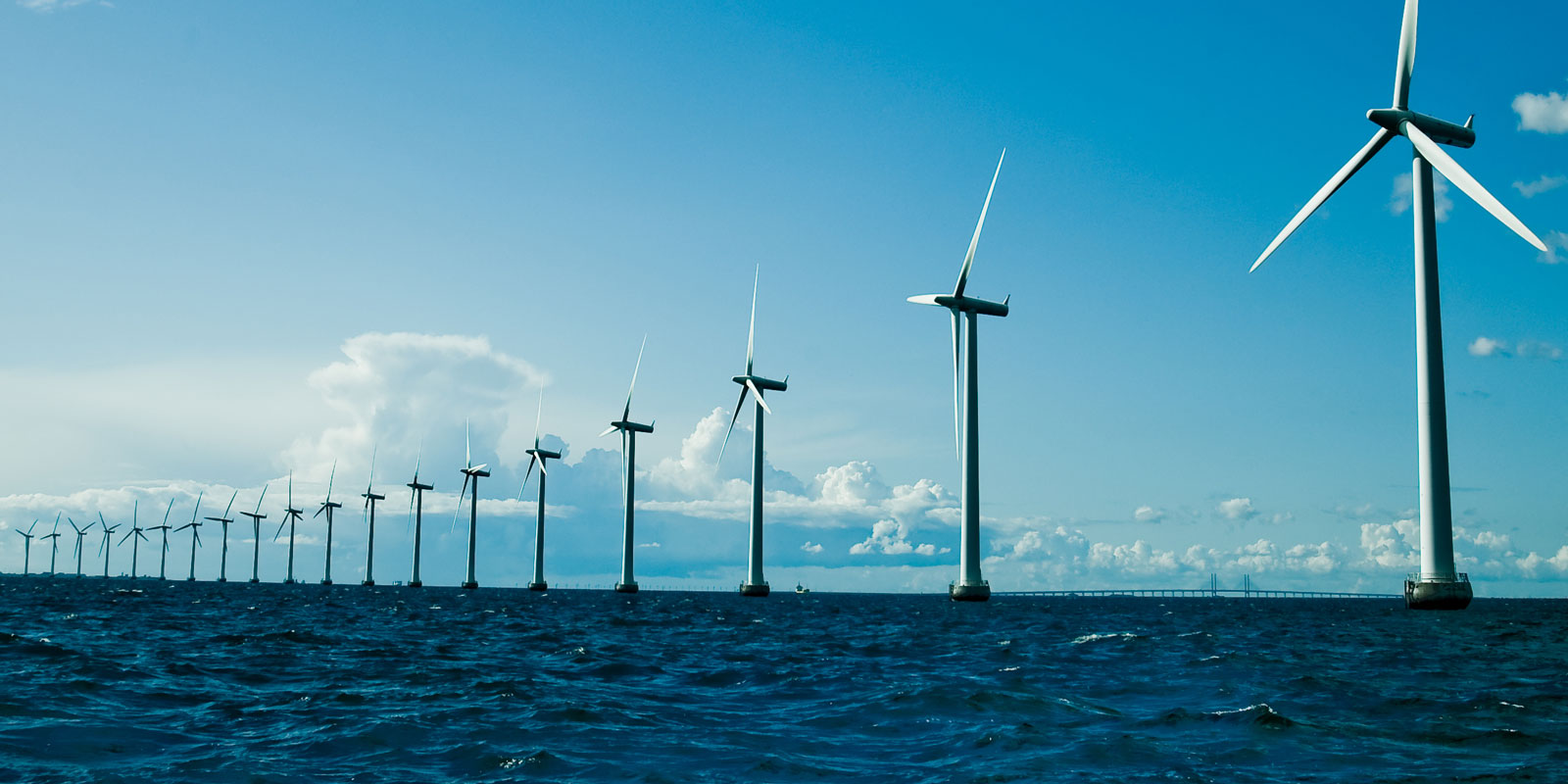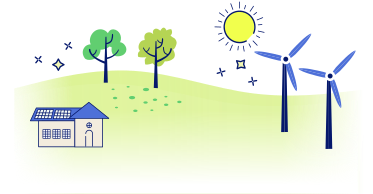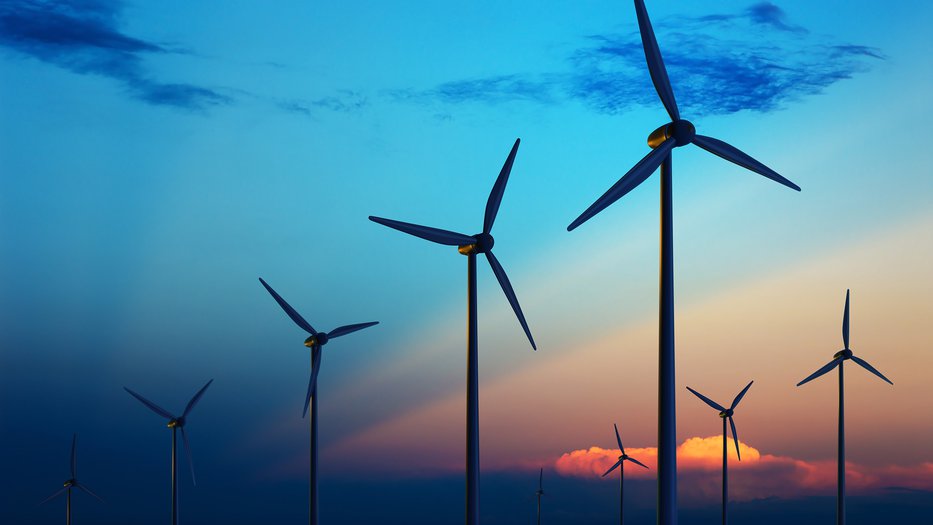This article is your guide to researching the best wind turbine for your home in 2025. The best wind turbines for your home will be the Pikasola wind turbine for value or the Ninilady 3000W for power. But there are many to choose from, so if you want to learn more, keep reading!
Here at The Energy Professor, we want to give you the information you need to not only save money on your energy bill but also to become more energy efficient. We hope you find this post helpful! It makes it easier for you to know more about the best home wind turbines. Be sure also to check out our one-of-a-kind energy savings calculator!
The Energy Professor Electricity Rate Check Tool
What is the Best Wind Turbine for My Home?

With a variety of options available, it’s important to find a model that suits your energy needs and environmental conditions. We think that the Automaxx Windmill 1500W Wind Turbine is the best, but there are many to choose from.
In this blog post, we’ll explore some of the best wind turbines for home use, including the Automaxx Windmill 1500W, Pikasola 400W Wind Turbine Generator, Ninilady 3000W Horizontal Wind Turbine, Tumo-Int 1000W Wind Turbine, and Eco-Worthy 400W 12V/24V Wind Turbine. Each of these turbines offers unique features and benefits, helping you make an informed decision for sustainable energy generation at home.
What is the best wind turbine for my home?
- Automaxx Windmill 1500W Wind Turbine
- Pikasola Wind Turbine 400W Wind Turbine Generator
- Ninilady 3000W Horizontal Wind Turbine
- The Tumo-Int 1000W Wind Turbine
- Eco-Worthy 400W 12V/24V Wind Turbine
Related post: What are Wind Energy Pros and Cons?
Best Overall: Automaxx Windmill 1500W Wind Turbine
Overview: The Automaxx Windmill 1500W has made it to the top of our list because it is not only easy to install, but it packs a punch with power. The Automaxx Windmill can be installed to a tower by attaching it to a battery on your own, or you can have a professional do it to ensure a proper setup. The Automaxx is lightweight but extremely durable with its fiberglass blades and polypropylene turbine housing.
- Rated Power: 1500W max output
- Start-up wind speed: 5.6 mph
- Rated wind speed: 31 mph
- Survival wind speed: 110 mph
- Blade material: Glass fiber & polypropylene
Pros:
- Low start-up wind speed
- High Output
- Maximum Power Point Tracking Protection – prevents sudden voltage surges and protects the battery from overcharging, ensuring efficient and safe operation.
- Bluetooth capabilities
Cons:
- On the expensive side
- Could have installation challenges
Important to know: The Automaxx Windmill 1500W is one of the only home windmills that offer a Bluetooth controllability feature. It lets you monitor and control your home windmill through a Smart App, which we think is a cool feature. So not only is it powerful, but it also is innovative and user-friendly when it comes to home wind turbine systems.
Related post: What are Wind Energy Pros and Cons?
Best Budget: Pikasola Wind Turbine 400W Wind Turbine Generator
Overview: The Pikasola Wind Turbine is a budget-friendly way to dip your toes into the world of green energy, costing around $300 for the whole kit. The maximum power output for the Pikasola Wind Generator is only 400W, which won’t power your entire home but can help you reduce your reliance on traditional power sources. The installation is also simple and can be done without a professional while also being durable and reliable during harsh weather conditions.
- Rated power: 400W
- Start-up wind speed: 6 mph
- Rated wind speed: 29 mph
- Survival wind speed: 90 mph
- Blade material: Nylon fiber
Pros:
- Affordable
- Easy Installation
- Durable
Cons:
- Low power input
- Noisy in high winds
Important to know: While the Pikasola Wind Turbine is very affordable, this will not be the best option to power your entire home. The Pikasola is meant to lower your monthly electric bills while also allowing you to be more sustainable. Additionally, keep in mind that in high wind conditions, the turbine can become noisy, so it’s recommended to install it in a location where noise won’t be a significant concern.
Related post: 9 of the Best Off-Grid Appliances
Most Powerful: Ninilady 3000W Horizontal Wind Turbine

Overview: The Ninilady 3000W is one of the best home wind turbines for many reasons, and it is top of our list for power. First off, the Ninilady home wind generator has a capacity of 3000W, which makes it suitable to power your entire house! The Ninilady 3000W has a low startup speed and has three different blade options to accommodate various wind speeds. The Ninilady is also built to withstand severe weather and operate safely with its aluminum alloy body. With a service life of over 20 years, this wind turbine is a durable and reliable choice.
- Rated power: 3000W
- Start-up wind speed: 6.5 mph
- Rated wind speed: 24.5 mph
- Survival wind speed: 100 mph
- Blade material: Steel
Pros:
- High power output
- Aerodynamic and customizable blades
- Sturdy and reliable
Cons:
- Expensive
- Limited availability
Important to know: The Ninilady turbine has a wheel diameter of 3.2m and a blade length of 1.6m. Ensure that you have adequate space in your property to accommodate the turbine and allow it to operate efficiently without obstructions. The Ninilady is also best installed by a professional due to how large it is to ensure the safest and most efficient operation.
Related post: Why is Energy Conservation Important?
Most Durable: The Tumo-Int 1000W Wind Turbine

Overview: The Tumo-Int 1000W is one of the most reliable and durable at-home wind turbine systems you can get on the market. It is one of the more quiet models with an aluminum alloy case that ensures lower noise and vibration. While the Tumo-Int 1000W might not be able to power your entire home, it will make a major impact on your monthly energy bill. It has a standalone form factor and is capable of withstanding harsh weather conditions, making it a reliable choice for long-term power generation.
- Rated Power: 1000W max output
- Start-up wind speed: 6 mph
- Rated wind speed: 28 mph
- Survival wind speed: 90 mph
- Blade material: Glass-fiber nylon
Pros:
- Strong energy output
- Reliable and long-lasting
- Low noise output
Cons:
- Expensive
Important to know: The Tumo-Int 1000W is truly special, as it has an automatic direction adjustment feature. This technology allows for the turbine to consistently monitor wind speeds and conditions and adjust accordingly if there is a more optimal direction. This feature sets the Tumo-Int 1000W apart from many other wind turbines on the market and can significantly enhance its overall efficiency and power generation.
Related post: How Does Geothermal Energy Work?
Best Small: Pacific Sky Power Survival Wind Turbine Generator

Overview: The Pacific Sky Power Home Wind Turbine is perfect for those on the go, as it is ultra-portable and affordable. The Pacific Sky has a maximum output of 15W, which is designed to charge your devices like phones, laptops, or other small off-grid appliances. The Pacific Sky wind turbine generator has no installation and takes up only a few inches of space, weighing only about 3 pounds. While it may not be suitable for home upgrades, it offers a practical and comparatively affordable option for basic emergency power anywhere you need it.
- Rated Power: 15W max output
- Start-up wind speed: 8 mph
- Rated wind speed: 25 mph
- Survival wind speed: 40 mph
- Blade Material: Composite
Pros:
- Extremely portable
- No installation required
- Durable
Cons:
- Low power output
- Only applicable for off-grid or charging devices
Important to know: The Pacific Sky portable wind turbine system is mainly used for basic emergencies or charging devices. This is the only home wind turbine that isn’t suitable for home use or to help you lower your energy bill. Therefore, it’s essential to assess your specific power needs and determine if the 15W power output aligns with your requirements.
Related post: Complete Guide to the Best Electricity-Saving Devices for Homes
Why Would I Want a Home Wind Generator?

There are many reasons that someone might want a home wind turbine system, with the most important being the overall savings. Home wind turbines can reduce your energy bill significantly and even, in some cases, pay you for the amount of energy you produce. A wind turbine for your home also gives you independence from fossil fuels and more control over your energy supply. By opting for a home wind generator, you not only reduce your energy costs but also contribute to a more sustainable future by utilizing clean and renewable energy sources.
What factors should I consider when looking for a wind generator for a home?
- Cost
- Size
- Noise Level
- Warranty
- Local Regulations
Cost
The most important factor to consider if you’re looking to install a windmill for a home is the cost. A small, hybrid windmill meant for powering a smaller space could cost a few hundred dollars, while other residential windmill systems can cost $40,000 or more! Therefore, you’ll have to compare your budget to your absolute needs in your windmill system since there is such a variety in cost.
Size
There are a variety of residential wind turbine sizes, ranging from small-scale wind turbines to power your RV or battery to larger-scale 1500w home wind turbines to power your entire home. Considering this, it’s important to note that installing a home windmill capable of powering your entire home will necessitate a significant amount of space in your backyard. If you’re contemplating the switch to a windmill of sufficient size for your home’s energy needs, ensure that your yard is spacious enough to accommodate its installation.
Noise Level
Some wind turbines can be extremely loud when operating, which can cause problems not only for you but for your neighborhood. If you live in a densely populated area or have noise restrictions, look for models that prioritize quiet operation. Manufacturers often provide noise ratings for their turbines, which can guide your decision-making. With personal experience with noisy home wind turbines, it can be very off-putting with how loud the blades are when spinning in high winds.
Warranty
Operating a wind turbine can be a lifelong investment. Therefore, you want to make sure you’re set up with a product with assistance if you need it. Reputable manufacturers will offer warranties and customer support, so make sure you’re shopping at companies that offer those perks.
Local Regulations
Familiarize yourself with local regulations and permitting requirements for installing wind turbines in your area. Some municipalities may have specific rules regarding height, setbacks, and noise limits that you need to adhere to. With that being said, depending on your location, there could also be financial incentives or government programs available to support those getting home wind generators.
Related post: What are Wind Energy Pros and Cons?
Wind Turbine for Home FAQ

Q: How big of a wind turbine do you need to power a house?
A: If you’re looking to power your home with a wind turbine, you’ll need a minimum of 1000W if you want to see a significant impact on your energy consumption. In reality, it will depend on how many watts or kilowatts you consume monthly if your home wind generator will suffice. A typical home uses around 10,649 kilowatt-hours (kWh) of electricity per year, which averages to about 877 kWh per month. If you’re considering using wind power, the size of the wind turbine you’ll need depends on the average wind speed in your area.
Q: How much does a house wind turbine cost?
A: A home wind turbine can cost anywhere from a couple of hundred dollars to thousands, depending on the size, durability, and function of your home wind turbine system. As a rule of thumb, the more powerful the home wind turbine, the more it will cost. It’s important to note that the cost of a home wind turbine includes not only the turbine itself but also additional expenses such as installation, permits, and any necessary equipment or infrastructure. These additional costs can vary depending on factors such as the location, complexity of installation, and specific requirements of the system.
Do you Need Cheaper Electricity?
If you’ve taken the time to understand the information on your bill and discovered you’re paying more than you’d like for your electricity, have you looked around for a cheaper deal? The Energy Professor has a wealth of information on saving on your utilities, including details of top deals that could significantly reduce your monthly or quarterly electricity bills.
We hope you found this article helpful! If you are looking for ways to increase energy efficiency and sustainability in your home, be sure to look at the latest renewable energy options in your area. The Energy Professor helps residential and small business owners find qualified energy suppliers in New York, New Jersey, Pennsylvania, Texas, Ohio, Maryland, Illinois, and Massachusetts.




